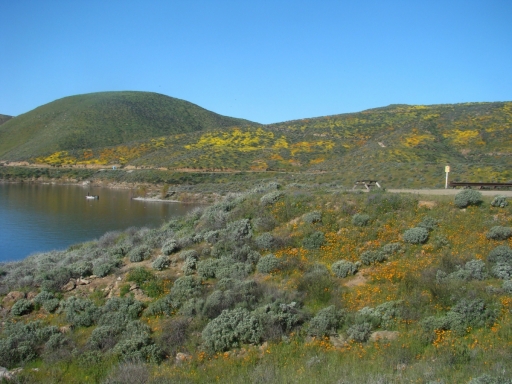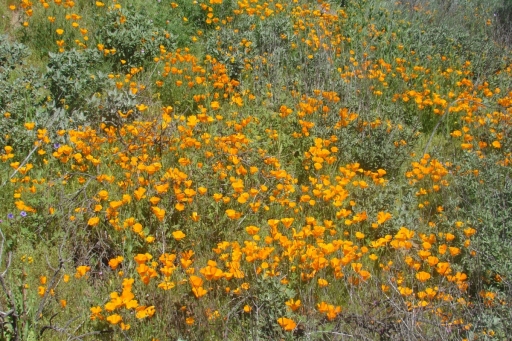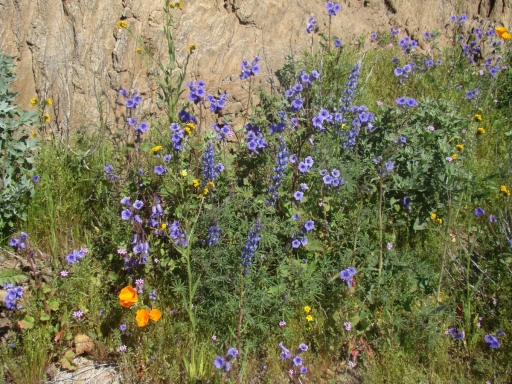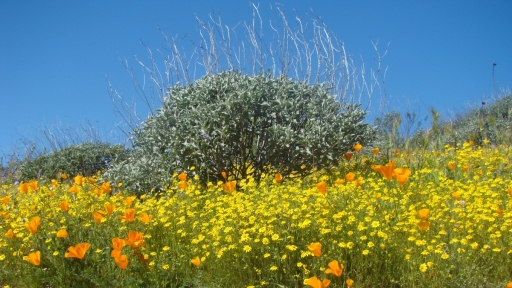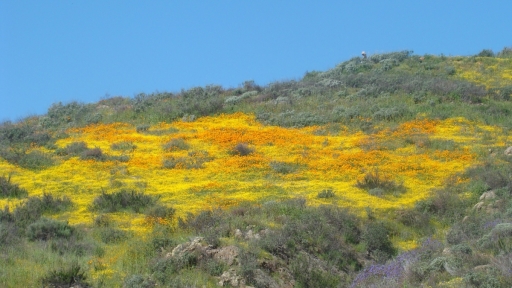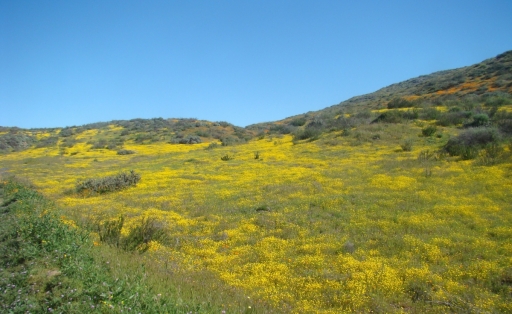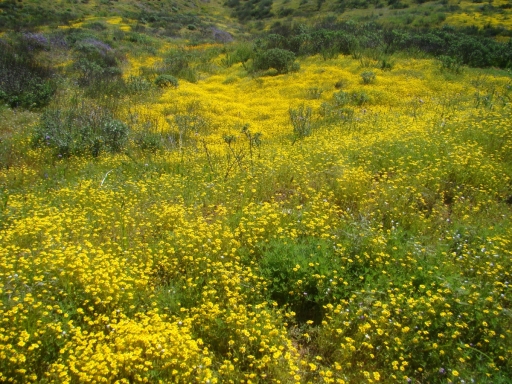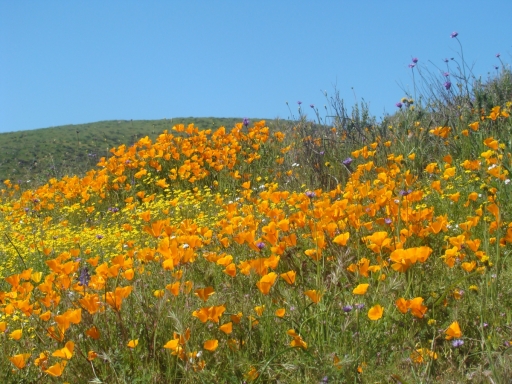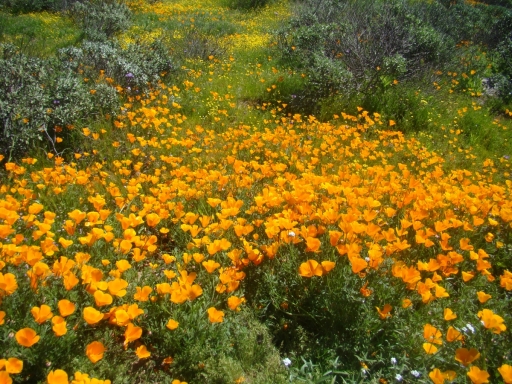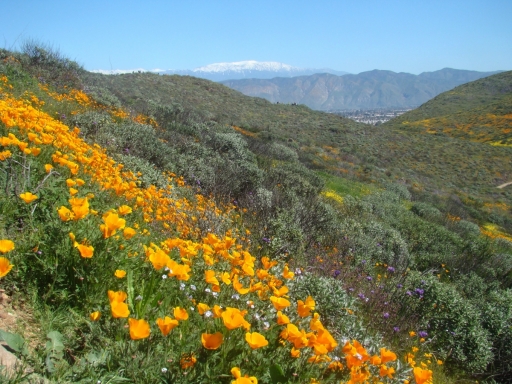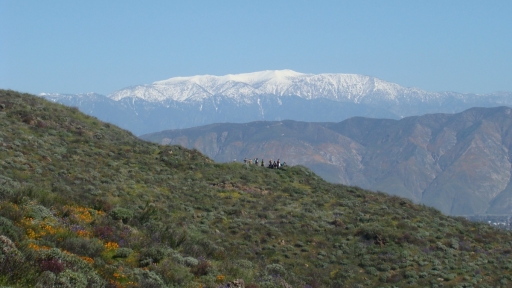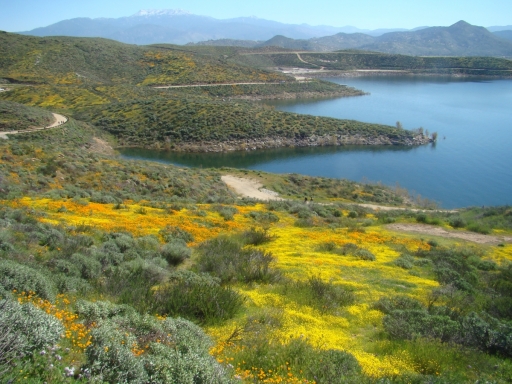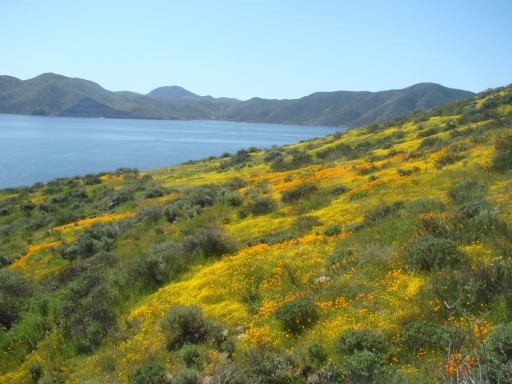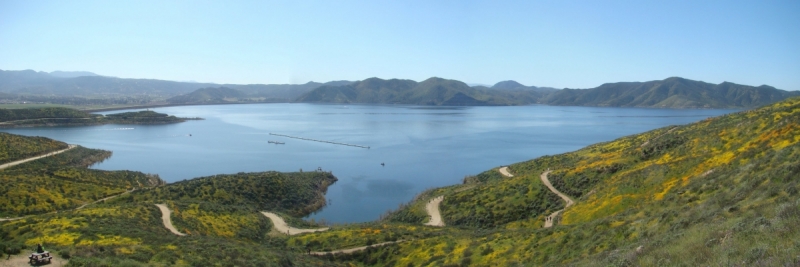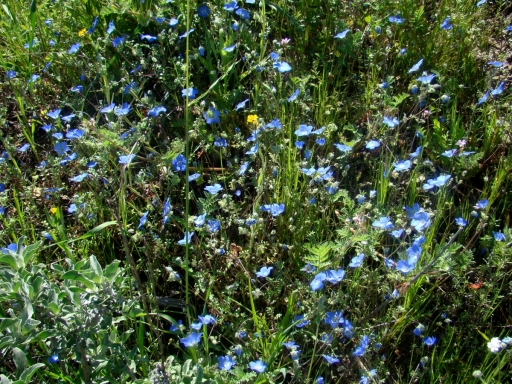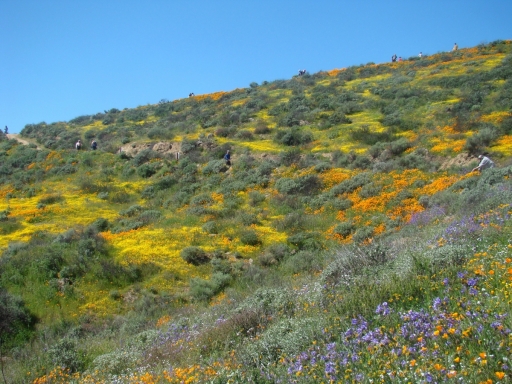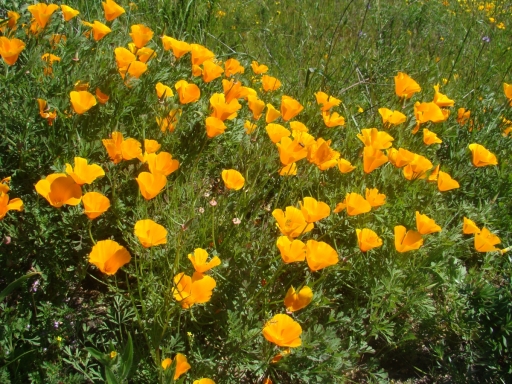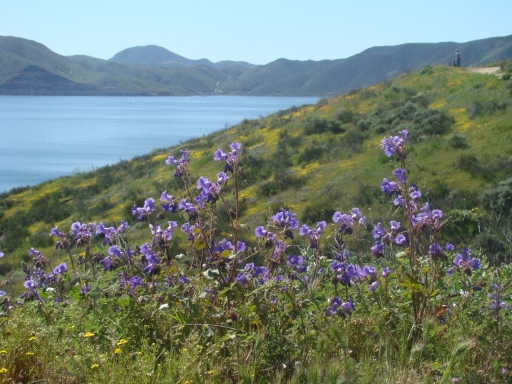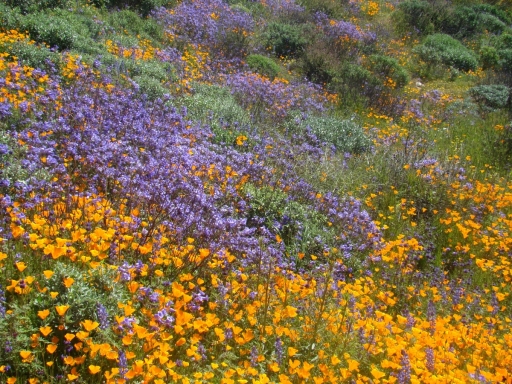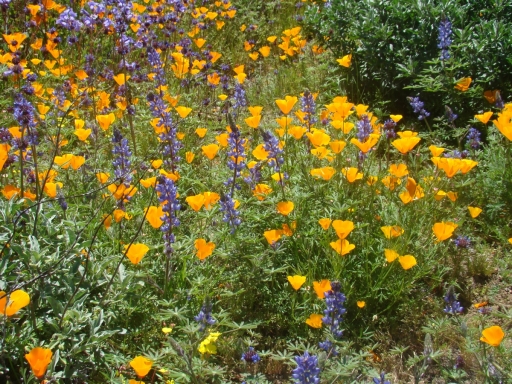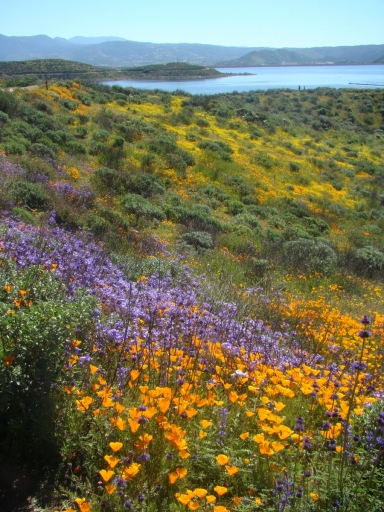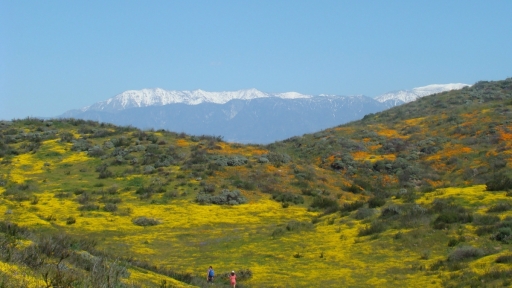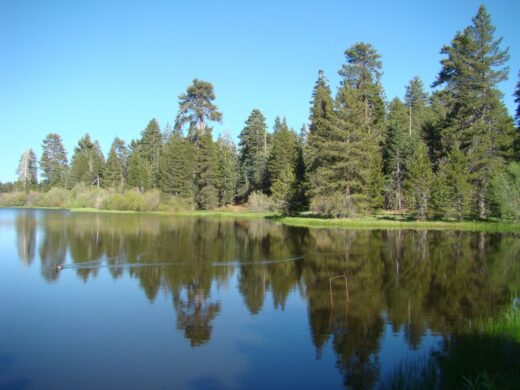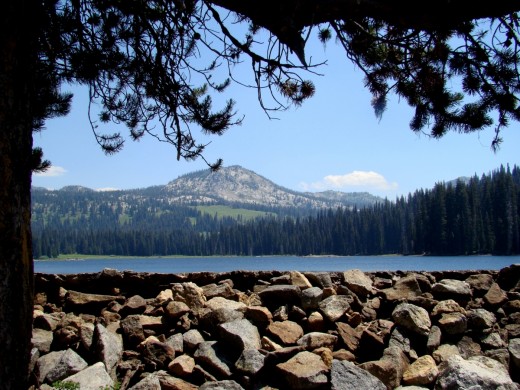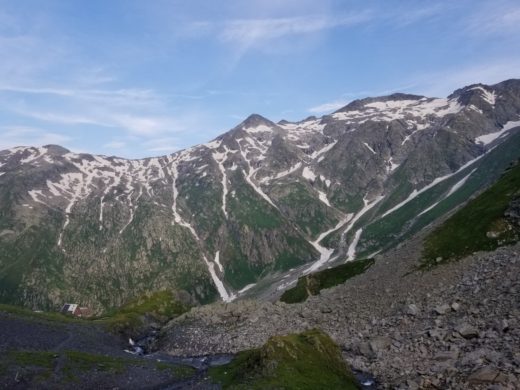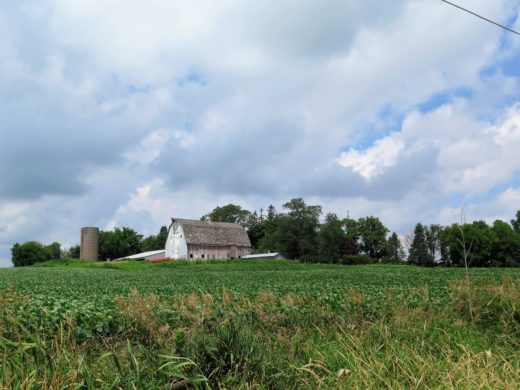Diamond Valley Lake Wildflower Spectacular
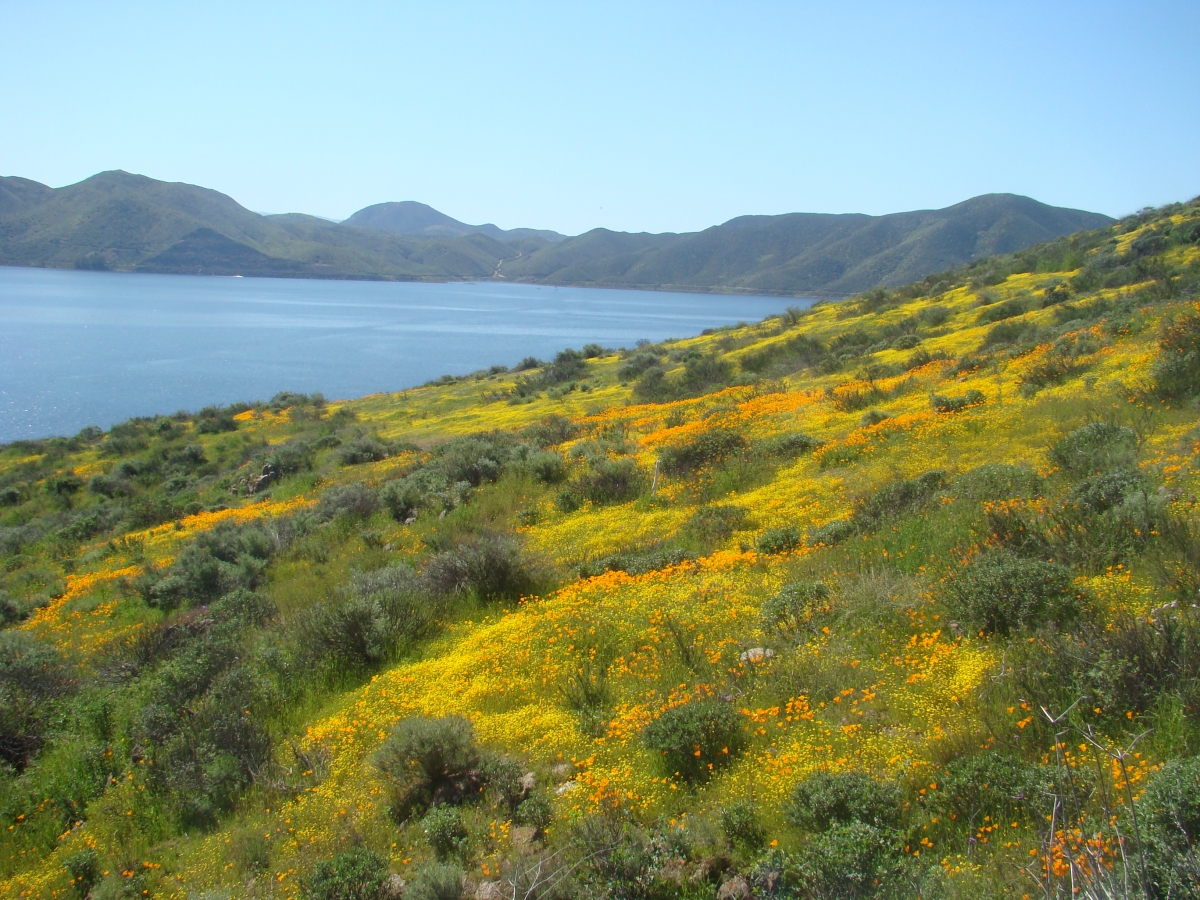
In Southern California wildflowers need certain conditions to bloom and this spring everything lined up just right to produce spectacular blooms. Since I had not yet experienced this phenomena I wanted to check it out. I went to Diamond Valley Lake since the wildflowers there were reported to be nearing their peak and it is not quite as well known as some of the other wildflowers areas.
Just a short walk from the parking lot gave the first view of the wildflowers on the hills surrounding the lake.
A little more walking gave closer views of the California Poppies. The petals of this flower close at night and open with warm temperatures during the day. It’s native habitat includes much of the western U.S. The California Poppy was officially made California’s state flower in 1903.
There were also blue Canterbury Bells. This biennial plant forms rosettes of leaves in the first year, stems and flowers in the second one.
This bush was surrounded by poppies and California Goldfields.
Sometimes wildflowers were in patches on the hills.
And other places they formed a carpet of yellow. The foreground is mostly California Goldfields which is a fast growing annual that attracts butterflies and birds.
Or a mass of yellow with a little blue in the distance.
This wildflower patch had a few Blue Dicks and white Forget-me-nots mixed in. Both are found scattered throughout the hillsides.
A dense California Poppy patch.
Looking north is a distant view of the San Bernardino Mountains.
A telephoto view of the San Bernardino Mountains. This mountain range includes San Gorgonio Mountain which is the highest peak in Southern California with an elevation of 11,503 feet. In the center of the picture is a group enjoying a picnic.
To the east are the San Jacinto Mountains with the faintly visible San Jacinto Peak.
The lake makes a nice backdrop for the wildflowers.
This panorama shows much of Diamond Valley Lake which is a man made lake. It was built in the saddle of two mountains with three earth fill dams to enclose the lake. Construction began in 1995 and then filled with water which completed in early 2002. The lake serves as a water reservoir for Southern California in times of drought. It also provides recreational boating and fishing opportunities.
A patch of Baby Blue Eyes. This annual herb is known for its bright-blue, five-petaled, bowl-shaped flowers with white centers.
When I got to the lake about 8:30 am there was only a fairly small number of people viewing the wildflowers. As the morning went on more and more came some of which can be seen on the trail and along the horizon. Since these super blooms occur on the order of once a decade some wildflower areas have had traffic and too many people problems.
Many stop to take closer wildflower pictures like this.
Or wildflowers with the lake in the background.
The blue and yellow together.
The blue flowers are Arroyo Lupine which is a hardy annual native to the western U.S. The upright spike of deep blue flowers attract birds and butterflies. It has an extensive root system that makes it good for bank stabilization. The bright green leaves are composed of several leaflets. On a foggy days water droplets gather on the plant’s leaves and run down the stems and into the ground, providing water to the roots.
And with the lake and mountains in the background.
I found the wildflowers to be as spectacular as everyone was saying they were. One last look before returning to the car.
More Information:
